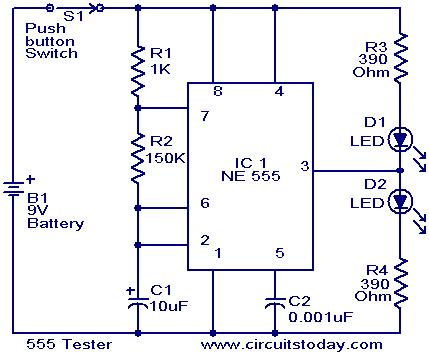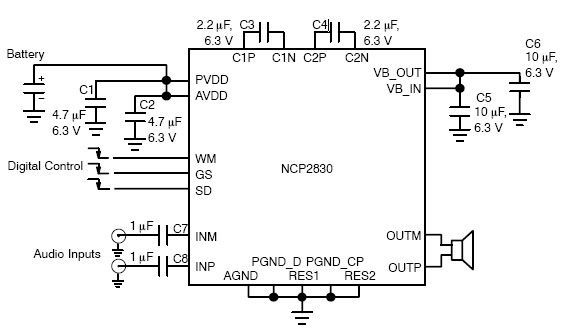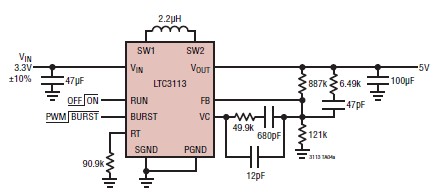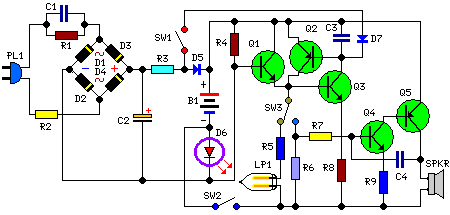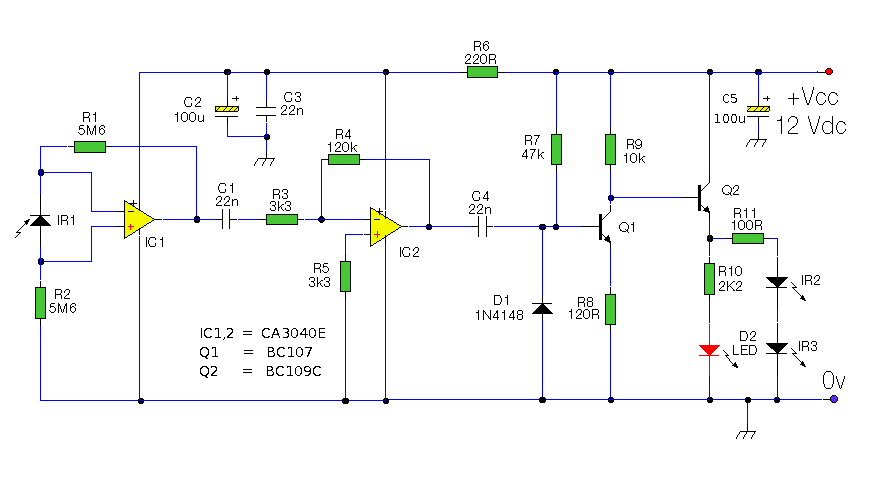
Key Illuminator Circuit
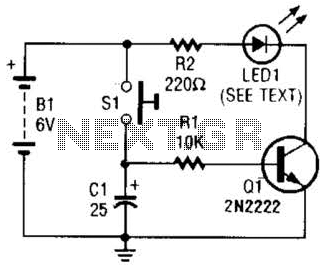
Used as a 10-second momentary illuminator, this circuit can be useful in other applications as well. Pressing SI charges CI, which holds Q1 on and keeps the LED lit for about 10 seconds.
The circuit described functions as a momentary illuminator, designed to activate an LED for a duration of approximately 10 seconds upon pressing a switch (SI). The core components involved in this operation include a switch (SI), a capacitor (CI), and a transistor (Q1).
When the switch SI is pressed, it initiates the charging process of the capacitor CI. The capacitor accumulates charge and, once sufficiently charged, it maintains the base current of the transistor Q1. This action effectively turns the transistor on, allowing current to flow through the LED, thereby illuminating it.
The duration for which the LED remains lit is primarily determined by the capacitance value of CI and the resistance in the circuit that governs the discharge rate of the capacitor. The relationship between these components can be described by the time constant τ (tau), calculated using the formula τ = R × C, where R is the resistance and C is the capacitance. The LED will remain illuminated until the capacitor discharges to a level where it can no longer keep the transistor in the 'on' state.
In practical applications, this circuit can be adapted for various uses beyond simple illumination, such as in timers, alarms, or indicators where a brief period of light is needed. Adjustments to the capacitor and resistor values can tailor the timing to meet specific requirements, making this circuit versatile for different electronic projects. Used as a 10-second momentary illuminator, this circuit can be useful in other applications as well. Pressing SI charges CI, which holds Ql on and holds the LED lit for about 10 seconds.
The circuit described functions as a momentary illuminator, designed to activate an LED for a duration of approximately 10 seconds upon pressing a switch (SI). The core components involved in this operation include a switch (SI), a capacitor (CI), and a transistor (Q1).
When the switch SI is pressed, it initiates the charging process of the capacitor CI. The capacitor accumulates charge and, once sufficiently charged, it maintains the base current of the transistor Q1. This action effectively turns the transistor on, allowing current to flow through the LED, thereby illuminating it.
The duration for which the LED remains lit is primarily determined by the capacitance value of CI and the resistance in the circuit that governs the discharge rate of the capacitor. The relationship between these components can be described by the time constant τ (tau), calculated using the formula τ = R × C, where R is the resistance and C is the capacitance. The LED will remain illuminated until the capacitor discharges to a level where it can no longer keep the transistor in the 'on' state.
In practical applications, this circuit can be adapted for various uses beyond simple illumination, such as in timers, alarms, or indicators where a brief period of light is needed. Adjustments to the capacitor and resistor values can tailor the timing to meet specific requirements, making this circuit versatile for different electronic projects. Used as a 10-second momentary illuminator, this circuit can be useful in other applications as well. Pressing SI charges CI, which holds Ql on and holds the LED lit for about 10 seconds.
